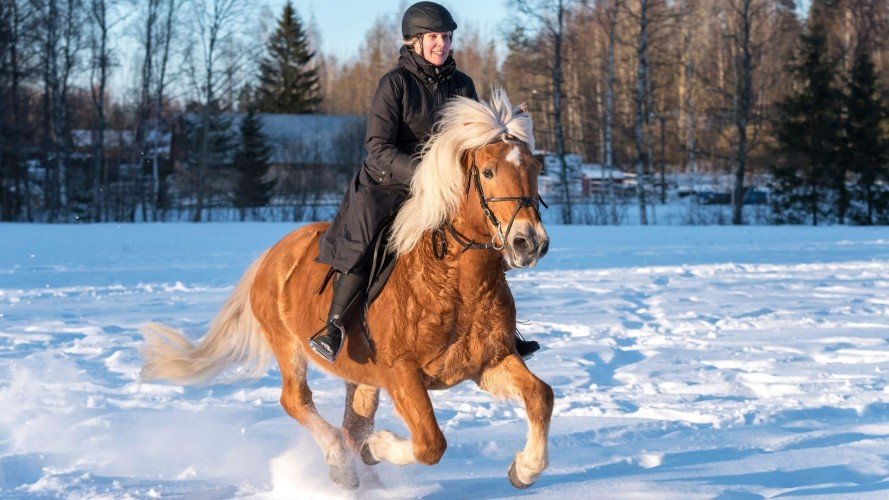
WINTER HORSE RIDING ADVICE
Now we're into January, it's trickier to coordinate our winter riding – not least because of the reduced daylight and slippery conditions. However, it is possible to maintain equine fitness by adapting our schooling programmes to include careful hacking, lungeing and slow manege work. Here are my top five tips for riding in the winter!
If your problem is simply one of time, consider lunging to maintain equine fitness - it is especially useful when time is limited, and may even be a safer choice than riding if the manege is badly lit. Build up from five minutes on each rein if you don't lunge regularly, to 20-30 mins in total. The Saddlery Shop offers a wide range of lunging equipment, from lunge cavessons and lunge lines, to the Micklem bridle, which can be used for lunging.
If your school is flooded, treat hacking out as a training session, and school as you ride; for example, riding lateral movements along a bridle path. Always wear high visibility gear, and avoid the end of the day when it becomes dusky. Consider also riding with a neck strap.
It is important to keep the horse’s muscles warm in winter - as the horse exercises, oxygen-carrying blood is released into the bloodstream and subsequently into the working muscles. The muscles warm up as they contract, allowing the horse to stretch and loosen up; however, this process takes longer in cold weather. A well fitting exercise sheet will therefore help to keep the muscles warm, and may also help prevent the horse stumbling due to tense, tight muscles.
Don’t neglect the importance of your horse’s balance this winter – reduced training caused by inclement weather may result in equine laziness, a lack of coordination and increased trips and stumbles, which can of course result in a fall. If you have a lazy horse, you may find that further training will help focus his attention. You could try working with ground poles to help him develop some spatial awareness, and regain some interest in his workload and where he is putting his feet. If your horse is unfit and uncoordinated, you may find that as he develops in fitness, the tripping reduces.
If you have access to a manege but are unable to do fast work or jumping due to wet conditions, go back to the beginning and work on your position and the horse’s outline in walk and trot. It will prove beneficial to both your flatwork and jumping.
 Saddle
Saddle
 Horse
Horse
 Dog
Dog
 Accessories
Accessories